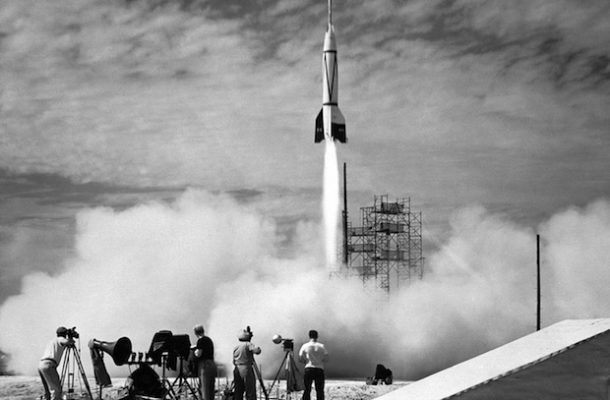An update on the space race

Welcome back everyone. We’ve talked a few times before about the space industry, how it’s changing and what to expect over the next few years. I’ve made a few predictions in the past and want to explore how they have turned out.
The thing about predictions is that clarity only comes with time and comparison. Jules Verne’s classic 1865 novel “From the Earth to the Moon” predicted a moon landing, and is a great illustration of how you see the future in the lens of your experiences at the time. Verne correctly saw a team of three people in an aluminium capsule, launching very near Cape Canaveral in Florida. But his launcher was a large cannon, and it would take another 60-years before considering the ballistic missile.
Predictions are imperfect but still important. We use them to make decisions, plan budgets, and set strategic directions. So before we make some predictions lets first look at how closely some of my prior expectations matched reality.
In 2013 I predicted space tourism in 10-years, built off the backs of space planes XCOR and Virgin Galactic.
In the four years since then XCOR was purchased by United Launch Alliance and quickly dismantled (they loved XCOR’s engine, but not the spaceplane). XCOR is now dead. Virgin Galactic had a major test-flight accident causing the death of the pilot. Virgin normally claims flights ‘in two years’ but after so much heartache people remain sceptical. Bigelow seems to be very much on track with their space hotels, as NASA is using their inflatable habitat on the International Space Station. Elon Musk recently announced his “BFR” concept (literally ‘Big F*cking Rocket’) and competitor Blue Origin finally left stealth mode and is taking customer orders. So as short—space planes are under threat, vertical launch is en vogue, but hang in there space fans because we have six more years before my forecast expires.
In 2014 we discussed CubeSats which, due to scale, allow market entry for less than the cost of a Boost Juice franchise, and SATCOM moving in 3-5-years for a $2Bn market by 2020.
In 2016 I predicted disruption in downstream markets, via new satellite Imagery available today.
What has transpired is an explosion of startups, anywhere from 45-60 new companies just in Australia alone. This represents $15-$20m in angel/VC investment today and $150m in civil space contracts available, if the current investments meet their goals in the next two years. They currently buy from foreign manufacturers, mostly in the USA who now have 5-10 years of experience and dominate Australia, cleaning out all of our fledgeling manufacturers that were slow to emerge in 2015. With a strategy of bundling they dominate the whole supply chain, from software to operations as well (“you don’t have to do anything, just give us money and we’ll do the rest”).
Internationally CubeSats are booming with thousands of new satellites but not in ways expected. Remember “those that own the road set the price.” PlanetLabs completed their global 100-CubeSat constellation and offer imagery for free and many “me too” imagery startups quickly dropped out. The Planet also consolidated by buying competitors, to include the Google Skybox I mentioned last year. New ventures, hesitant to compete, are trending to higher fidelity markets cameras. Higher fidelity means larger spacecraft, more mass and more cost. Enter stage left, the microsatellite. The CubeSat’s larger and slightly more capable cousin is the size of your drinks fridge and almost as popular. Bigger means pricier, but also slower innovation cycles.
Microsat resurgence plus new growth in the Internet of Things mean that the satellite communications market is entering as expected. Myriota and Fleet, Australia’s two IoT hopefuls, compete in a rapidly changing landscape overseas. Several large traditional SATCOM companies are also testing the waters with 100-microsat constellations with some very bold claims in the thousands. If successful we will see a 3-5 times increase in global space traffic.
The CubeSat is far from obsolete, and the plateau in innovation may be an opportunity for a more research focused Australian to gain operational and manufacturing experience that can scale. Enter stage right, new CubeSat ventures spinning out of UNSW Sydney and UNSW Canberra, as well as the new $5m funded Satellite Training Centre organised by USYD. If these ventures can take the risk to develop new leaps in small subsystems tech, then Australia has a chance to compete in small satellite manufacture. If they go the easy, low risk route our manufacturing sector will flounder and the $150m in satellite contracts will go overseas, pushing back heritage we need to chase for the next NBNCo Satellite upgrade (or similar $2Bn national need), in 5-10-years.
Now let’s put this all together. The NewSpace market is very much on track, with a few caveats. There are many new satellites but the launchers are slow to market and this creates bottlenecks— lots of birds to fly, not enough wings to send them, life slows down while the prices go up. Manufacturing is consolidating with fewer players and for Australia that means a risk of monopolistic practices that can limit our innovation potential.
Are there leap ahead strategies that allow us to enter the game? Let’s cover that in the next post.
RELATED MATERIAL
- Disruption in space – an update
- Disruption in the space industry
- Why Space is no longer the final frontier
Prior to founding Saber Astronautics, Dr. Jason Held was a US Army Major and Space Support Team leader for USSTRATCOM (formerly Space Command) and deployed globally in support of military space missions. He conducted flight software engineering for the Wide Field Camera 3 of the Hubble Space Telescope and testing for the International Space Station. Dr. Held was twice a guest instructor for the University of Stuttgart’s IRS Space Station Design Workshop and led a research expedition in the high Canadian Arctic. At the University of Sydney, he founded the space engineering laboratory, providing leadership for the university small satellite project and Australia’s first premix rocket engine.











